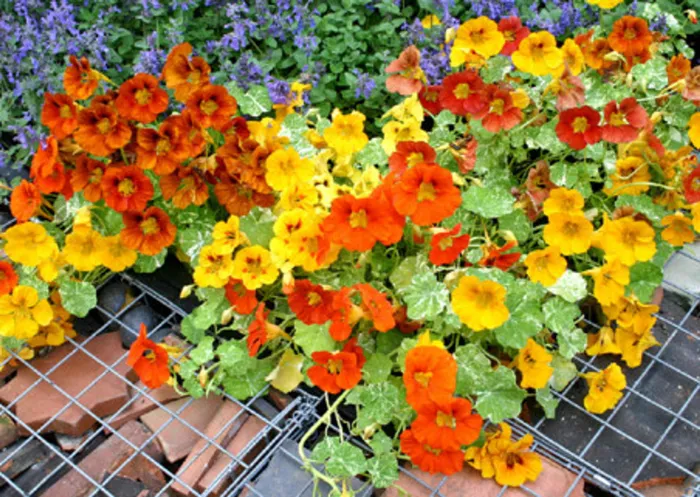Add a splash of colour

vibrant: Brightly coloured annuals create a focal point and attract insects for pollination. vibrant: Brightly coloured annuals create a focal point and attract insects for pollination.
No garden should be without colour this summer. The fastest route to instant colour in the garden is to plant annuals in garden borders or patio containers.
Buying trays of bedding plants from your local garden centre and planting them straight into the garden is quick and easy. In these recessionary times, however, it’s worth considering growing annuals from seed this spring.
Some annuals can be sown directly into the ground, while others need the protection of a seedling tray for a few weeks before being planted out in the garden.
Here’s a guide to sowing colour this summer:
Read the seed packet
Is your border sunny or shady? Do you need annuals for edging at the front of the border, or taller ones for the middle? What colour scheme do you want? To find out where a plant grows best, its height, when to sow the seeds, and how to achieve best germination rates, simply look on the seed packet.
Some seeds can be sown in situ
Some seeds can be sown directly into garden beds once all danger of frost is over. These include alyssum, cosmos, nasturtium, portulaca, sunflower, cosmos, celosia, gazania and salvia. Prepare the beds with compost and well-rotted kraal manure. Wet the soil, then sow seeds. Keep the soil moist at all times till the seedlings are well established.
Sow certain seeds in trays
Other seeds germinate best when grown in seed trays. Examples are aquilegia, campanula, celosia, cleome, coleus, dianthus, lobelia, marigold, nicotiana, petunia, salpiglossis, snapdragon, torenia, vinca and zinnia.
Choose containers that drain well
Seedling roots don’t like being waterlogged. Your local garden centre will have ready-made 5-8cm deep seedling trays with drainage holes and good seedling or potting soil mixes. Fill the container with seedling soil, then make sure the soil is thoroughly damp before you plant the seeds.
Sow correctly
Sprinkle seeds thinly on top of the growing medium. Very fine seed, such as pansies, petunias, phlox and lobelias, can be mixed with an equal quantity of mealie meal or fine river sand to ensure a more even distribution. Use a sieve to sprinkle soil lightly over the seeds. The general rule is to cover the seed with an amount of soil equal to twice its thickness. But some flowers – including snapdragons, alyssum, lobelia, petunia, diascias and phlox – need light to germinate and should not be covered at all.
Keep the seeds warm and moist
Most seeds germinate at about 21°C, so place the seed trays in a warm, protected spot. If the seeds require darkness to germinate, place newspaper over the tray until they have germinated. Read the seed packet to find the germination temperature. Putting the seed tray in a clear plastic bag and sealing it, or covering it with a sheet of glass will keep the seeds warm, and the soil moist.
Seedlings need light and moisture
At the first sign of sprouting, remove the covering and put the seed trays where they will receive plenty of light, but not direct sun, such as a partially shaded but light area in the garden. The best way to water seeds and seedlings is from below. Place the seed trays in a large basin of water and allow them to absorb moisture for several hours before taking them out again. Or place them on a tray and pour water into the tray. Alternatively, use a watering can with a fine rose spray head to water the seedlings.
Transplant after sprouting
When the seedlings are about 5cm high and develop their first true leaves (that is, their second pair of leaves), transplant them into pots or into larger, deeper seedling trays filled with a seedling soil mix. Space them further apart than before.
“Prick out” the seedlings, one at a time, using an ice cream stick or a similar tool, taking care to transfer as much of the old growing medium as possible and not to damage the stem or roots. Gently firm the soil around each seedling. Apply a seedling fertiliser.
Harden off the seedlings
Two weeks before transplanting into the garden put the seedling trays outside, preferably in a spot where they’ll receive direct sun in the morning and bright, but indirect light in the afternoon, to prepare them for garden conditions. Keep the soil moist at all times. When they are bigger, transplant into the garden. After planting, fertilise the seedlings every four weeks. For more information, www.lifeisagarden.co.za. - Saturday Star